京都の石畳を彩る、可憐な舞妓の姿。そのだらりの帯や繊細なかんざし、優雅な舞に、誰もが一度は心を奪われたことがあるのではないでしょうか。しかし、彼女たちが一体いつから、そしてどのようにして日本の伝統文化の象 徴となったのか、その華やかさの裏に隠された長い歴史の道のりを知る人は多くありません。
- 茶屋の奉公少女から生まれた「舞妓」の原型
- 江戸時代の泰平が生んだ花街文化と専門職への道
- 近代化の波と戦争を乗り越え、現代に息づく伝統の継承者
華やかな姿の裏に秘められた始まり
今日我々が目にする舞妓の直接的なルーツは、江戸時代に遡ります。その舞台となったのは、京都・八坂神社の門前です。当時、神社仏閣の参道には「水茶屋」と呼ばれる休憩所が立ち並び、参拝客にお茶や団子を提供していました。
そこで働いていたのが、「茶汲女(ちゃくみおんな)」や「茶点女(ちゃたておんな)」と呼ばれる10代前半の少女たちです。彼女たちの仕事は、当初はお茶を運ぶなどの素朴な給仕が中心でした。しかし、やがて客の求めに応じて歌を歌ったり、簡単な舞を披露したりするようになります。これが、芸で客をもてなす「舞妓」の原型になったと言われています。まだ専門的な芸妓とは異なり、あくまで茶屋のサービスの一環でしたが、その可憐な姿が評判を呼び、徐々に人気を集めていきました。
花開く江戸文化と「舞妓」の誕生
江戸時代中期から後期にかけて、社会が安定し町人文化が花開くと、京都の祇園は洗練された大人の遊び場として大きく発展していきます。これに伴い、お茶屋遊びもより高度で専門的なものが求められるようになりました。
この流れの中で、茶屋で奉公していた少女たちの中から、芸事に特化した者が現れ始めます。そして、芸の師匠について本格的に唄や舞、三味線などの稽古を積んだ少女たちが、やがて一人前の「芸妓(げいこ・げいぎ)」になる前の修行段階として「舞妓」と呼ばれるようになりました。
この時代に、現在に繋がる舞妓独特のスタイルが徐々に確立されていきます。長いだらりの帯、季節の花をあしらった花かんざし、おしろいで白く塗った化粧、そして自身の髪で結い上げる「割れしのぶ」や「おふく」といった髪型など、舞妓を象徴する様式美がこの時期に形作られていったのです。彼女たちは、芸妓とは異なる初々しさで座敷に華を添える、専門的な職業として認知されるようになりました。
時代の荒波と変容する役割
明治維新による近代化の波、そして二度の世界大戦は、花街のあり方にも大きな影響を及ぼしました。明治時代に入ると、花街は公式に許可された遊興の場として制度化され、置屋(舞妓や芸妓が所属する家)やお茶屋(客をもてなす場所)、そして芸事の稽古や取り締まりを行う検番(けんばん)といったシステムが確立します。
しかし、第二次世界大戦中には、戦時体制下で多くの花街が営業停止を余儀なくされ、舞妓たちは一時その姿を消しました。戦後、苦難の末に花街は復活を遂げますが、社会の価値観の変化や新しい娯楽の登場により、以前と同じような隆盛を取り戻すのは容易ではありませんでした。
さらに、戦後に制定された児童福祉法や労働基準法の影響で、かつてのように10代前半の少女が舞妓になることはできなくなりました。現在では、中学校を卒業した15歳以上の女性でなければ舞妓になることはできません。舞妓の役割も、お座敷での接待だけでなく、京都の伝統文化を国内外に紹介する観光大使のような側面も強まっています。
現代に受け継がれる伝統と未来への眼差し
現代において、舞妓は日本の伝統芸能と「おもてなし」の精神を体現する、極めて貴重な存在です。後継者不足やライフスタイルの変化という課題に直面しながらも、京都の五花街(祇園甲部、宮川町、先斗町、上七軒、祇園東)では、今なお厳しい稽古を経て新しい舞妓が誕生しています。
彼女たちは、お座敷での芸の披露はもちろん、都をどりや鴨川をどりといった各花街の公演、地域の祭事への参加などを通じて、その文化を守り伝えています。また、その美しい姿は京都の街並みに欠かせない風物詩であり、世界中から訪れる観光客を魅了し続けています。伝統を重んじながらも、その魅力を次世代に伝えるための模索は、これからも続いていくことでしょう。
解説ポイント①:茶屋の奉公少女から生まれた「舞妓」の原型
舞妓の起源とされる水茶屋の少女たちは、現代の舞妓とは大きく異なる存在でした。彼女たちは置屋に所属するのではなく、あくまで茶屋の奉公人であり、仕事内容もお茶出しや掃除といった雑用が主でした。その合間に見せた舞や歌は、専門的な訓練を受けたものではなく、見よう見まねの素朴な芸であったとされています。しかし、彼女たちの存在がなければ、後に専門職としての舞妓が生まれることはありませんでした。この「もてなしの心」の原点が、厳しい修行を積む現代の舞妓の精神にも受け継がれていると言えるでしょう。
解説ポイント②:江戸時代の泰平が生んだ花街文化と専門職への道
「舞妓」が職業として確立された背景には、江戸時代の長期にわたる平和と経済発展があります。これにより、京都や江戸、大坂などの大都市で町人文化が爛熟し、高度な遊興文化が生まれました。祇園をはじめとする花街は、単なる飲食の場ではなく、洗練された芸や粋な会話を楽しむ社交場へと発展します。こうした中で、客の目を楽しませるための専門的な技能が求められ、芸妓になる前の若い見習い期間として「舞妓」という制度が定着しました。衣装や化粧、所作に至るまで、全てが「粋」という美意識のもとに体系化されていったのです。これは、日本の文化がサービスを芸術の域にまで高めた一例と言えます。
解説ポイント③:近代化の波と戦争を乗り越え、現代に息づく伝統の継承者
明治以降、舞妓を取り巻く環境は法制度によって大きく規定されることになります。特に大きな変化は、戦後の法律改正による舞妓の「低年齢化の禁止」です。かつては10歳前後で置屋に入り、長い年月をかけて芸を仕込むのが一般的でしたが、中学校卒業が義務付けられたことで、舞妓として活動できる期間は実質的に15歳から20歳頃までの約5年間となりました。この期間の短縮は、芸事の習得をより集中的かつ効率的に行う必要があることを意味します。現代の舞妓は、限られた時間の中で伝統文化の担い手となることを期待されており、その役割は歴史上のどの時代よりも重いものになっているのかもしれません。
参考文献
- 祇園商店街振興組合 GION.or.jp – 舞妓さん
- 京都市観光協会 – 京都観光Navi:花街
- そうだ 京都、行こう。 – 舞妓さんと芸妓さんの違いって?
- 上七軒公式ウェブサイト – 舞妓さんについて
【English Article】
The Unseen World of Maiko: A Journey from Teahouse Girls to Cultural Icons
The graceful figure of a maiko adorns the stone-paved streets of Kyoto. With their dangling obi sashes, delicate floral hairpins, and elegant dances, they have captivated hearts for generations. However, few know the long and storied history behind their glamour—a journey that explains when and how they became such iconic symbols of Japanese traditional culture.
- The Origin of “Maiko”: From Serving Girls in Teahouses
- The Edo Period’s Flourishing “Hanamachi” Culture and the Path to Professionalism
- Surviving Modernization and War to Become Heirs of a Living Tradition
A Splendid Appearance with Humble Beginnings
The direct roots of the maiko we see today can be traced back to the Edo period (1603-1868). The stage for their emergence was the area инфекront of Yasaka Shrine in Kyoto. At that time, rest stops called “mizu-jaya” (water teahouses) lined the approaches to shrines and temples, serving tea and snacks to pilgrims and visitors.
Working at these establishments were young girls in their early teens known as “chakumi-onna” (tea-serving girls) or “chatate-onna” (tea-making girls). Initially, their duties were simple, centered on serving tea. However, they gradually began to sing songs and perform simple dances at the request of customers. This is said to be the prototype of the “maiko,” who entertain guests with their artistic skills. Although they were different from professional geishas and their performances were merely part of the teahouse service, their charming presence gained popularity.
The Flowering of Edo Culture and the Birth of the “Maiko”
From the mid to late Edo period, as society stabilized and merchant culture flourished, the Gion district of Kyoto developed into a sophisticated playground for adults. Consequently, entertainment at teahouses became more advanced and specialized.
Amid this trend, some of the girls serving in teahouses began to specialize in the performing arts. After undergoing formal training in song, dance, and playing the shamisen under the tutelage of masters, these young girls came to be known as “maiko” during their training period before becoming full-fledged “geiko” or “geigi” (the Kyoto term for geisha).
It was during this era that the distinctive style of the maiko, which continues to this day, was gradually established. The iconic aesthetics—the long, dangling “darari” obi sash, the “hana-kanzashi” floral hairpins that change with the seasons, the white “oshiroi” makeup, and the elaborate hairstyles like “ware-shinobu” and “ofuku” created with their own hair—all took shape during this time. They became recognized as professionals who, with a freshness distinct from geiko, added a touch of splendor to social gatherings.
The Tumultuous Tides of Time and a Changing Role
The wave of modernization following the Meiji Restoration (1868) and the two World Wars had a significant impact on the world of the “hanamachi” (geisha districts). In the Meiji era, hanamachi were institutionalized as officially sanctioned entertainment districts. A system was established consisting of “okiya” (houses where maiko and geiko live and are registered), “ochaya” (teahouses where guests are entertained), and “kenban” (offices that manage training and engagements).
However, during World War II, many hanamachi were forced to close under the wartime regime, and maiko temporarily disappeared from the scene. Although the hanamachi were revived after the war through great hardship, it was not easy to regain their former prosperity due to changing societal values and the emergence of new forms of entertainment.
Furthermore, due to the post-war enactment of the Child Welfare Act and the Labor Standards Act, it was no longer possible for young girls in their early teens to become maiko. Today, a woman must be at least 15 years old and have graduated from junior high school to become a maiko. Their role has also expanded from solely entertaining at private parties to include serving as cultural ambassadors, introducing Kyoto’s traditional culture to both domestic and international audiences.
A Tradition Inherited in the Modern Age and a Gaze Toward the Future
In contemporary times, maiko are invaluable presences that embody the spirit of Japanese traditional arts and “omotenashi” (hospitality). While facing challenges such as a shortage of successors and changing lifestyles, new maiko are still being trained through rigorous practice in Kyoto’s five hanamachi (Gion Kobu, Miyagawa-cho, Ponto-cho, Kamishichiken, and Gion Higashi).
They preserve and transmit their culture not only by performing their arts at gatherings but also by participating in public performances like the Miyako Odori and Kyo Odori, as well as in local festivals. Their beautiful figures are an indispensable feature of Kyoto’s cityscape, continuing to fascinate tourists from all over the world. The quest to pass on this cherished tradition to the next generation while respecting its essence will undoubtedly continue.
Analysis Point ①: The Origin of “Maiko”: From Serving Girls in Teahouses
The teahouse girls considered the origin of maiko were very different from their modern counterparts. They were not affiliated with an okiya but were employees of the teahouse, and their work mainly consisted of menial tasks like serving tea and cleaning. The dances and songs they performed in their spare time were not professionally trained but were rustic arts learned by observation. However, without their existence, the professional maiko would never have been born. This original “spirit of hospitality” is said to be inherited by the modern maiko who undergo rigorous training.
Analysis Point ②: The Edo Period’s Flourishing “Hanamachi” Culture and the Path to Professionalism
The establishment of the “maiko” as a profession was fueled by the long period of peace and economic development during the Edo period. This led to the maturation of a sophisticated entertainment culture in major cities like Kyoto, Edo (now Tokyo), and Osaka. Hanamachi, including Gion, evolved from simple dining spots into social venues for enjoying refined arts and witty conversation. This environment demanded specialized skills to entertain discerning guests, leading to the establishment of the “maiko” system as an apprenticeship before becoming a geiko. Every aspect, from costume and makeup to gestures, was systematized under the aesthetic of “iki” (chic and sophisticated), a prime example of Japanese culture elevating service to an art form.
Analysis Point ③: Surviving Modernization and War to Become Heirs of a Living Tradition
From the Meiji era onward, the environment surrounding maiko became heavily regulated by law. A particularly significant change was the post-war prohibition of “underage maiko.” It was once common for girls to enter an okiya around the age of 10 and spend many years learning the arts. However, with junior high school education becoming compulsory, the period a woman can be a maiko is now practically limited to about five years, from age 15 to around 20. This shortened duration means that the acquisition of artistic skills must be more intensive and efficient. Modern maiko are expected to become guardians of traditional culture in a limited time, making their role arguably more demanding than at any other time in history.


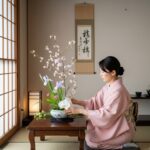
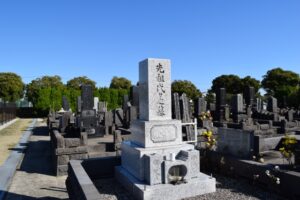
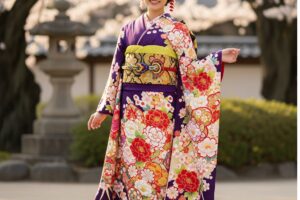


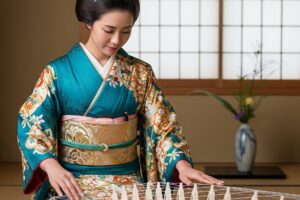

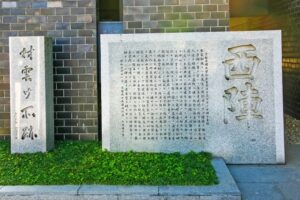
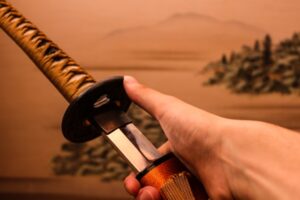
コメントを残す